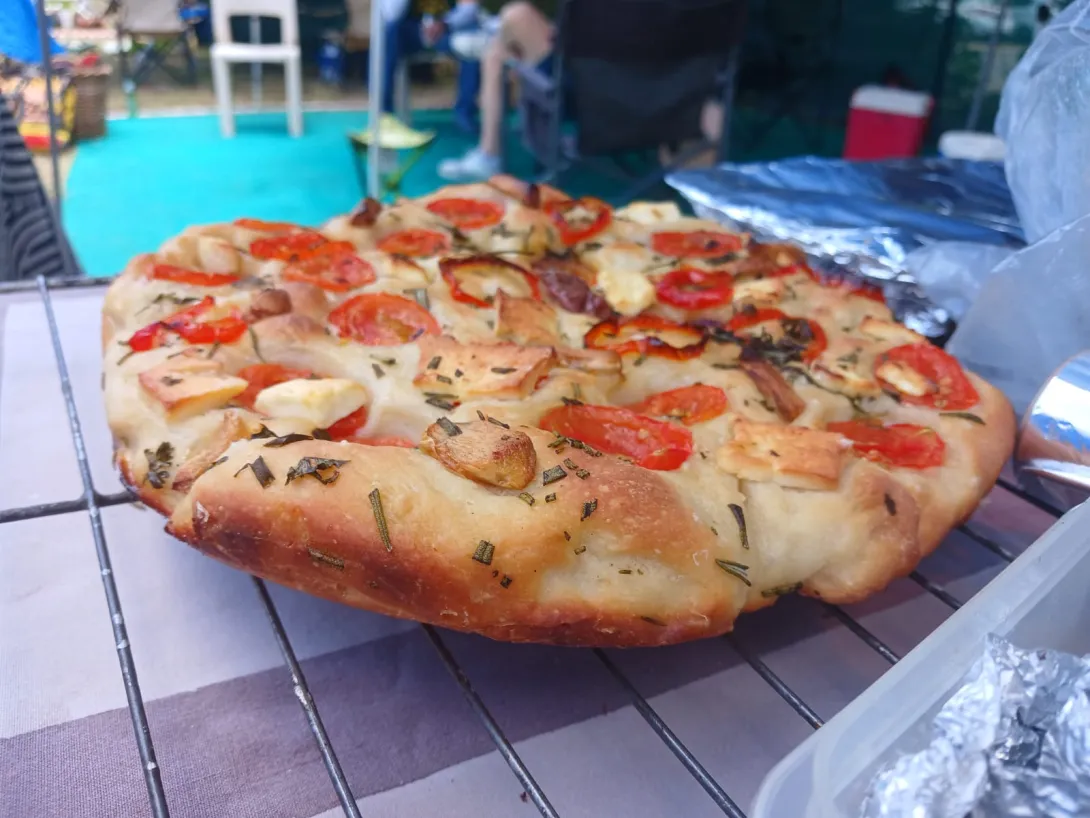
South Africans love to braai. You might call it a barbeque or BBQ, but our word for it is braai! A braai may not even be what you expect in terms of meat grilling on a grid. When we go camping sometimes we make something which we call a 'potjie' pronounced 'poy-kie', or potjiekos.
Potjiekos, is a traditional South African dish cooked in a round, cast-iron, three-legged pot called a "potjie". Meaning "small pot food" in Afrikaans, it is a slow-cooked, layered stew made outdoors over an open fire, traditionally with meat, vegetables, and starches. Once the lid is on, it is not stirred, allowing the flavours to meld together in distinct layers.
I recently got roped into participating in a 'potjiekos' competition as the bread baker on the team. We also had a dessert maker, in addition to the main dish which was the potjie. All made outdoors on the BBQ. For the bread I decided to make focaccia with a focus on flavourful toppings. The main focus was on the meat stew though, with the bread intended as an accompaniment and even, dare I say it, as something to eat with the gravy.
Our team placed a lot of focus on how we were going to bake the focaccia over the open fire. In the past my best results with focaccia on the BBQ were from using my baking steel in the Weber, with heat provided by charcoal placed around the edge in a circle, giving the centre region an area with indirect heat. As a pan, I used a stainless steel 'hotel pan' on top of the steel with the Weber lid on, with about 30 minutes bake time, 10 minutes covered with foil. This method works, but the negatives are that usually the bottom crust is crispier than the top.
Traditional 'barrel' braai with two Dutch ovens, the top one with the lifter knob had the stew in it, whereas the bottom one was used for baking focaccia:

For this competition we got it right with a better system though. We used a flat bottomed Dutch oven sitting on a bed of fire bricks that had been heated with coals first. Coals were from both wood and charcoal. The bread was lowered in on parchment into the Dutch oven, and then coals were placed on the lid of the pot to provide extra top heat which gave a good rise, and more importantly we achieved a similar level of top and bottom heat in the pot, with the result that both the top and bottom crust were cooked correctly. Bake time was 20-30 minutes, with a quarter turn of the pot every 5 minutes. It is necessary to keep an eye on it and judge accordingly, and when checking to carefully lift the lid taking care that no ash falls onto the bread.
The correct amount of coals to have on the lid of the Dutch oven to bake focaccia:
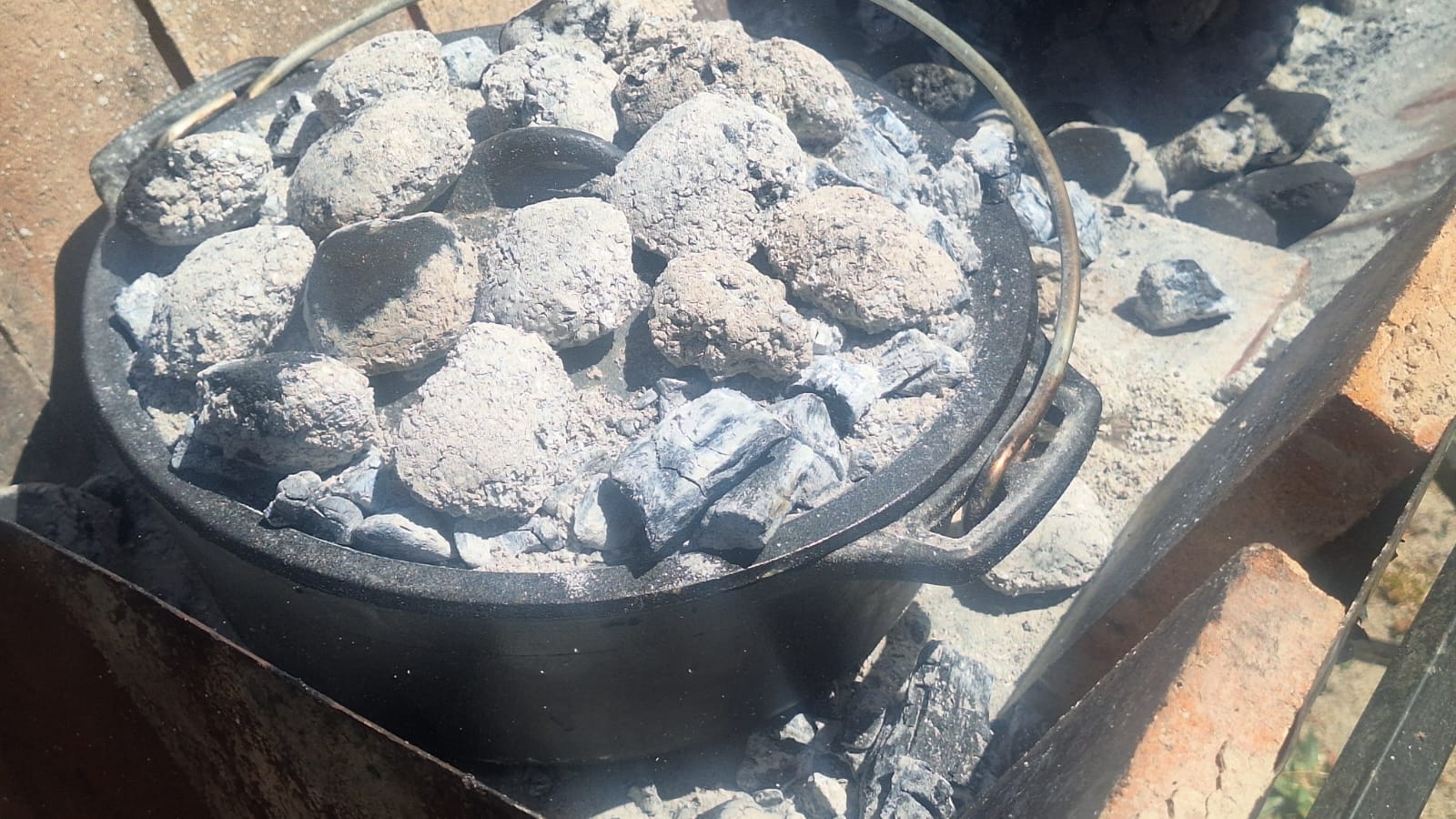
The focaccia was made with a 48 hour fridge ferment, ~30% of the flour was used to make an initial poolish with a small amount of instant yeast, then 24 hours later the remaining flour and water was added. The flour used was Caputo Nuvola 00. About 500-550g of dough for each focaccia.

I paid a lot of attention to the toppings used to give the maximum flavour impact, and wasn't stingy with peppadews (sweet/savoury tiny bell peppers), feta cheese (from goats milk and cows milk), cherry tomatoes, kalamata olives, oven roasted garlic, and herbs consisting of fresh chopped rosemary, chives, parsley, Maldon salt, pepper and olive oil were also generously used.
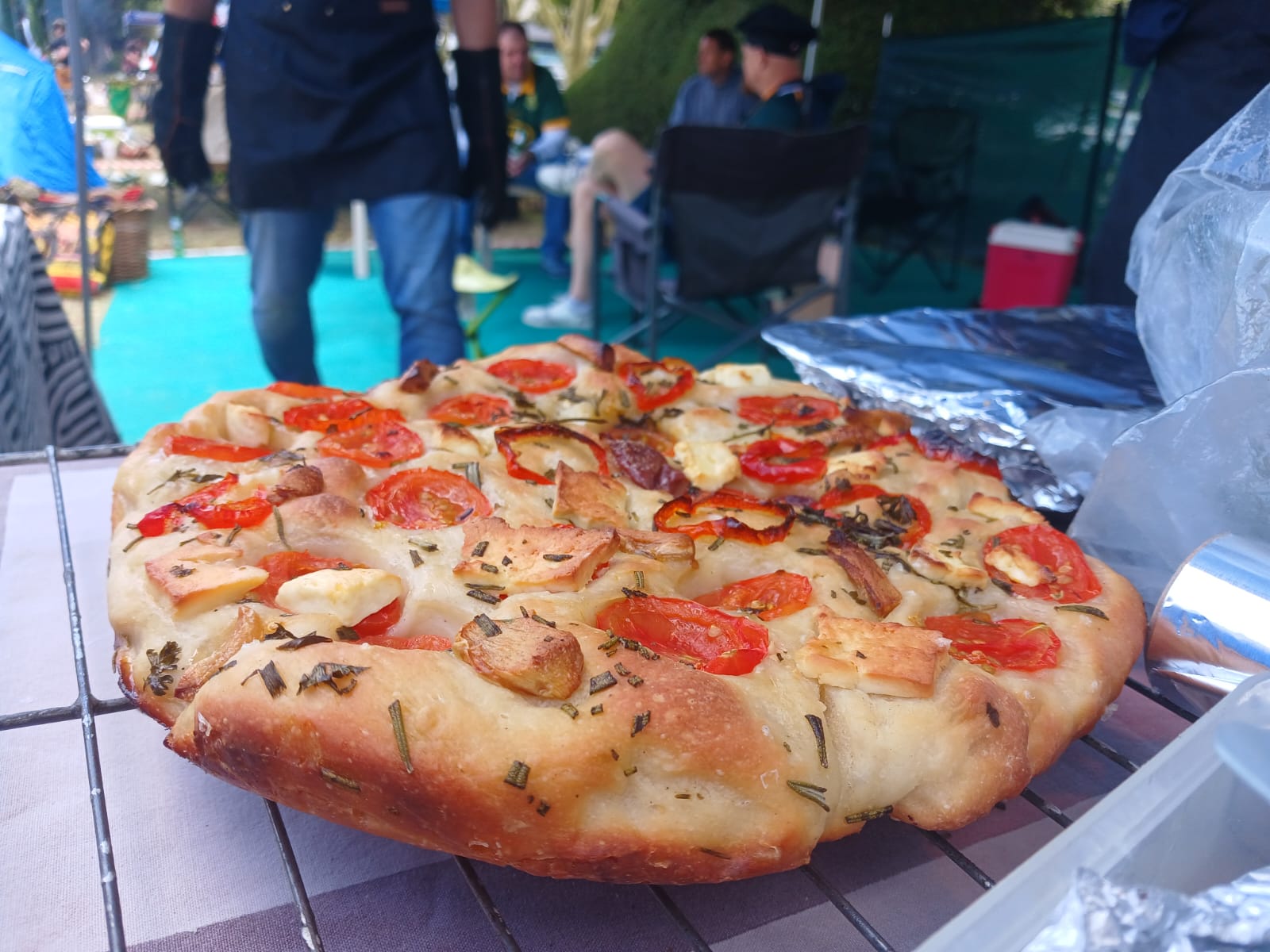
Quite proud that the mystery of how best to bake a focaccia when camping, seemed to be solved with this one which had a lovely spring with great open crumb and didn't stint on the flavours.
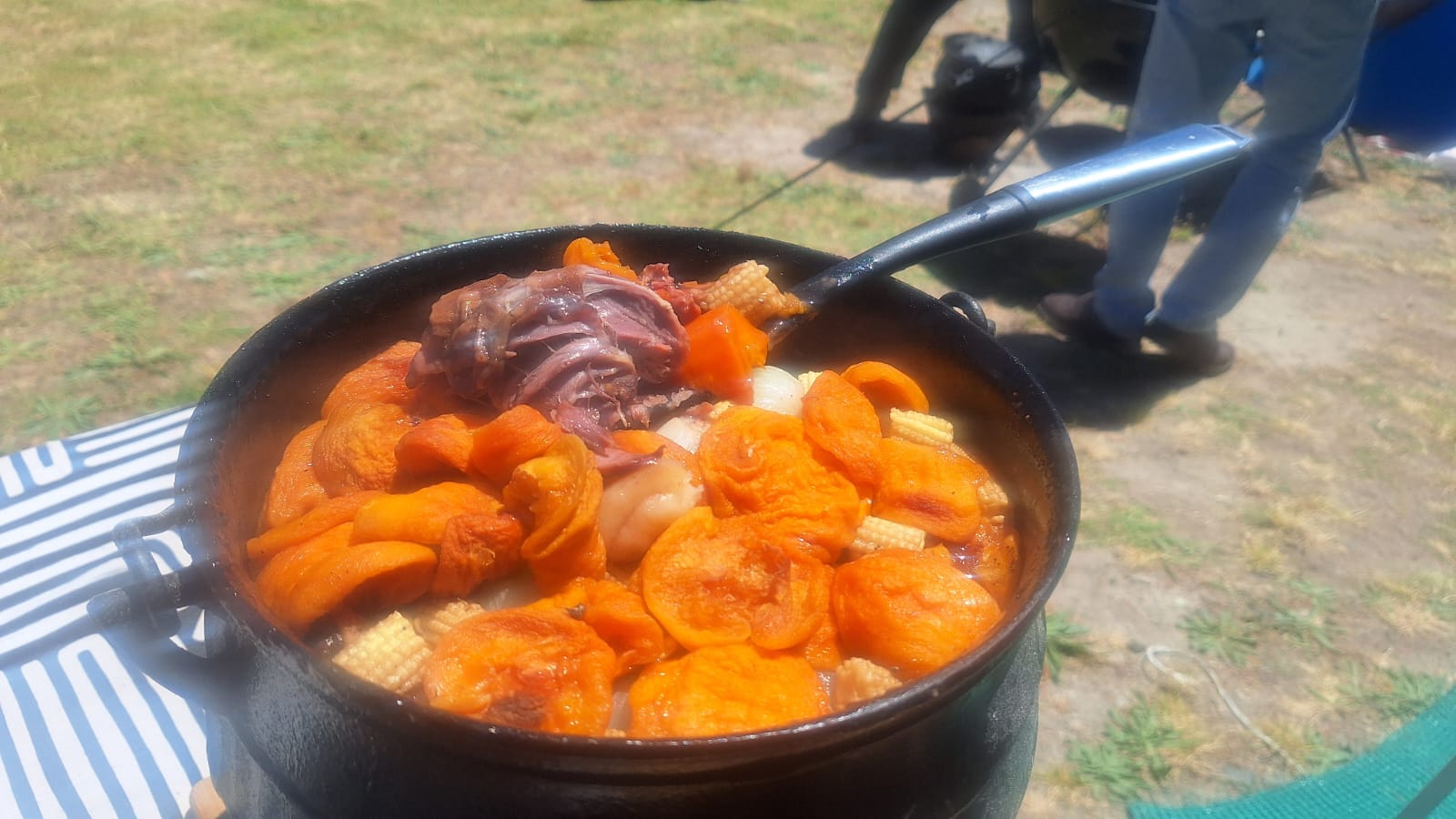
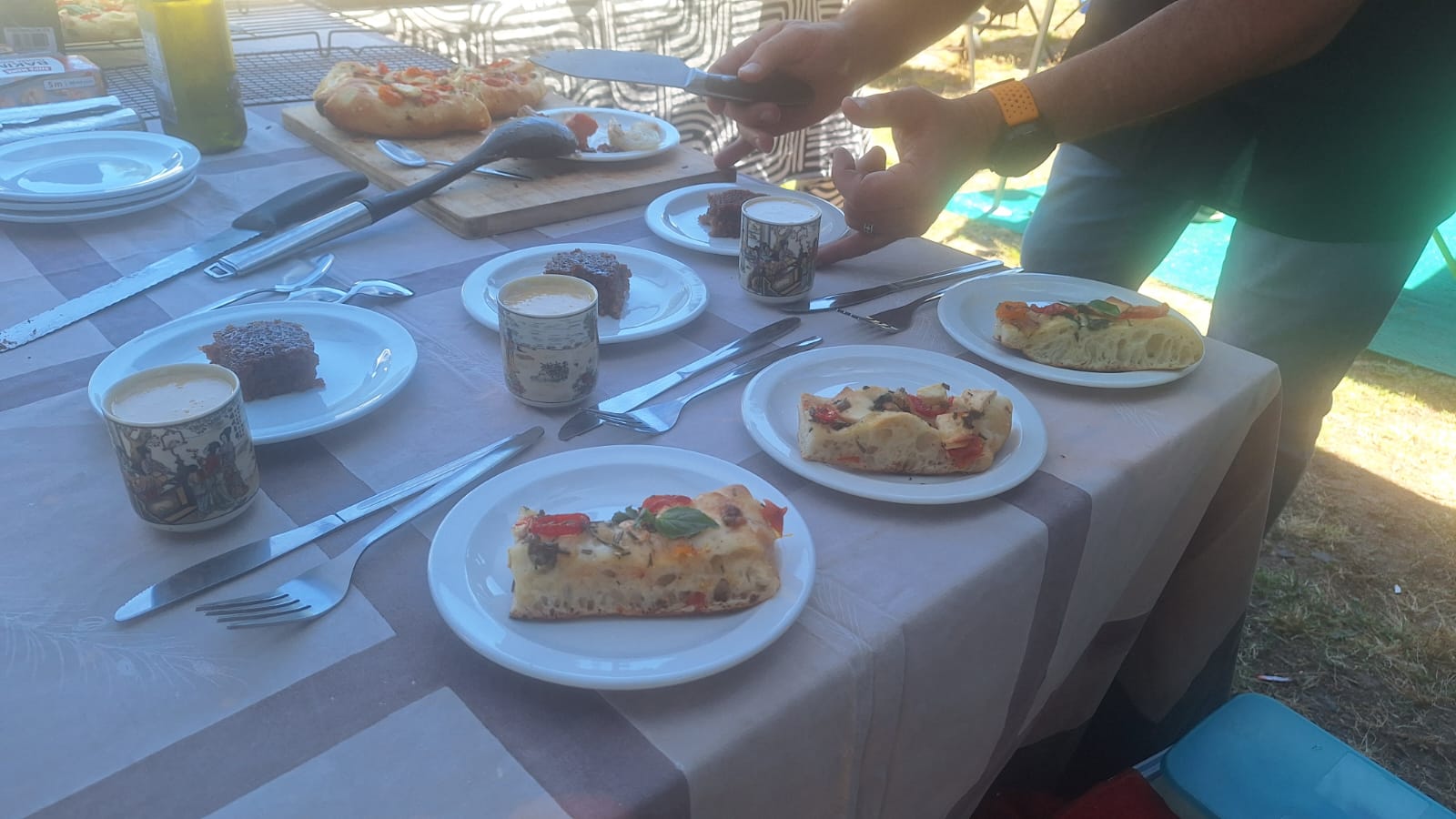
- JonJ's Blog
- Log in or register to post comments
Both the bread and the potjie look outstanding to me. The baking method is just that same as the old traditional way Irish soda bread was baked, as I understand it.
For the potjie, how much liquid would typically be used?
TomP
Not much, just enough to cook the meat, with the rest of the liquid coming from your veg. Meat is the bottom layer and then veg on top of that. It isn't stirred until right at the end, so important to get it right.